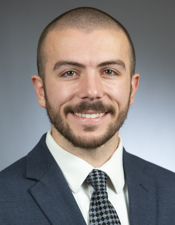What is pharmacogenomics? Maybe a life saver
Prescribing medication can be a crapshoot. Upon receiving a diagnosis, many a patient goes through a period of trial and error in which doctors try to figure out what treatment works best. Medications that are very effective for one person may not do much for another. Or, worse, cause a toxic reaction.
Why is that? Well, there’s a field of medical research called pharmacogenomics that’s built upon the principle that a person’s genetic makeup has a lot to do with it. But it’s a relatively new discipline that proponents believe could get a big boost if the Legislature gets behind it.
That’s the point of HF3122, sponsored by Rep. Hunter Cantrell (DFL-Savage).
It would request that the University of Minnesota establish a temporary pharmacogenomics task force that would analyze strategies to promote its research and use, then submit a report to the Legislature.
The House Higher Education Policy and Finance Committee laid the bill over, as amended, Wednesday for possible omnibus bill inclusion. Its companion, SF3846, sponsored by Sen. Jim Abeler (R-Anoka), awaits action in the Senate Higher Education Finance and Policy Committee.
“Pharmacogenomics is a form of precision medicine,” said Pamala Jacobson, director of the Institute for Personalized Medicine at the University of Minnesota College of Pharmacy. “It is the science of using the DNA makeup of cells to predict how effective or toxic a medication will be, thereby providing each patient with individualized therapy and/or dosing.”
Jacobson said that this precision medicine approach is proving effective in cancer treatment, and she and her colleagues would like to expand implementation in other areas.
Also speaking in support of the bill was David Gregornik, director of the Clinical Pharmacogenomics Program at Children’s Minnesota. He expressed hope that the task force and legislative support would open the field to more patients, expand education and recordkeeping, and encourage insurers to pay for the testing. He said most don’t at this point.
While the bill originally featured a $250,000 appropriation, an amendment removed that and inserted a section on the university seeking grants from foundations and other agencies.
Rep. Duane Quam (R-Byron) described pharmacogenomics as “the cutting edge for economical care.”
“I think it was around 2016 that pharmaceuticals passed hospitalization as the major cost driver for health care expenses,” Quam said. “This is a verifiable way to avoid pharmaceutical costs. If you get the right medicine the first time in close to the right dosage, it doesn’t take too many prescriptions to recover.
“When someone has a mental health issue, it’s frequently a year and a half to find the right med and tune it in. During that year and a half, there are readmissions and, unfortunately, some people don’t survive. There are multiple ways that we can intelligently cut costs and provide better care through this.”
Related Articles
Search Session Daily
Advanced Search OptionsPriority Dailies
Ways and Means Committee OKs proposed $512 million supplemental budget on party-line vote
By Mike Cook Meeting more needs or fiscal irresponsibility is one way to sum up the differences among the two parties on a supplemental spending package a year after a $72 billion state budg...
Meeting more needs or fiscal irresponsibility is one way to sum up the differences among the two parties on a supplemental spending package a year after a $72 billion state budg...
Minnesota’s projected budget surplus balloons to $3.7 billion, but fiscal pressure still looms
By Rob Hubbard Just as Minnesota has experienced a warmer winter than usual, so has the state’s budget outlook warmed over the past few months.
On Thursday, Minnesota Management and Budget...
Just as Minnesota has experienced a warmer winter than usual, so has the state’s budget outlook warmed over the past few months.
On Thursday, Minnesota Management and Budget...
